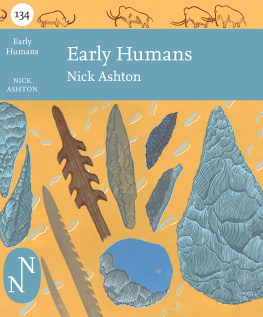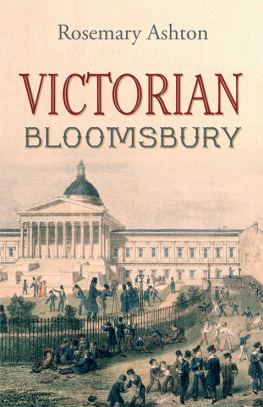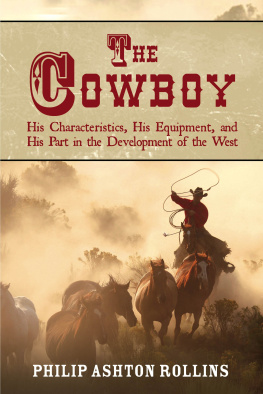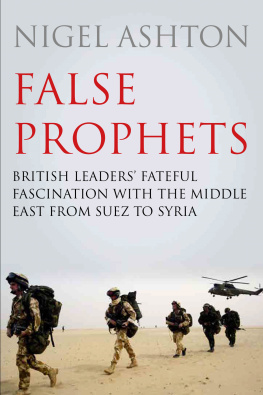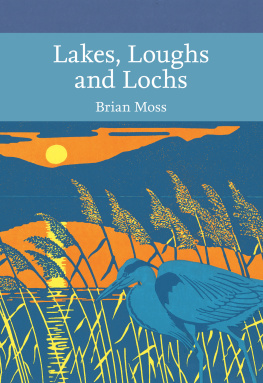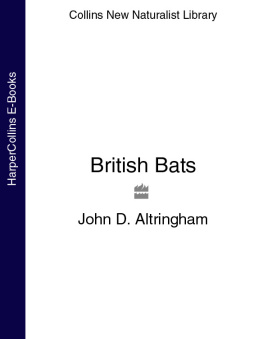Contents
EDITORS
SARAH A. CORBET, S C D
DAVID STREETER, MBE, FIB IOL
JIM FLEGG, OBE, FIH ORT
P ROF . JONATHAN SILVERTOWN
P ROF . BRIAN SHORT
*
The aim of this series is to interest the general
reader in the wildlife of Britain by recapturing
the enquiring spirit of the old naturalists.
The editors believe that the natural pride of
the British public in the native flora and fauna,
to which must be added concern for their
conservation, is best fostered by maintaining
a high standard of accuracy combined with
clarity of exposition in presenting the results
of modern scientific research.

William Collins
An imprint of HarperCollinsPublishers
1 London Bridge Street
London SE1 9GF
WilliamCollinsBooks.com
This eBook edition published by William Collins in 2017
Copyright Nick Ashton, 2017
Nick Ashton asserts the moral right to be identified as the author of this work.
Cover design linocut by Robert Gillmor.
A catalogue record for this book is available from the British Library.
All rights reserved under International and Pan-American Copyright Conventions. By payment of the required fees, you have been granted the non-exclusive, non-transferable right to access and read the text of this eBook on-screen. No part of this text may be reproduced, transmitted, downloaded, decompiled, reverse engineered, or stored in or introduced into any information storage and retrieval system, in any form or by any means, whether electronic or mechanical, now known or hereinafter invented, without the express written permission of HarperCollins Publishers.
Source ISBN: 9780008150334
Ebook Edition May 2017 ISBN: 9780008150341
Version: 2017-05-11
FOR SUE
B RAVING ICE AGE CLIMATES, EARLY HUMANS colonised our remote corner of the European mainland time and again. Glacial periods were succeeded by interglacials, with far-reaching consequences for the ability of early people to visit these islands, far less to stay permanently. Here is a strangely different but dimly recognisable Britain. It is shown through the eyes of a distinguished archaeologist who treats the reader to a contemporary view of the very latest findings in the quest to unravel the interactions between the changing environments and their ancient human occupants, their lifestyles and migrations, in these islands. Here we see the latest dating techniques and the latest discoveries from archaeological sites around Britain, from the southwest peninsula to the Scottish islands. We take in about a million years of prehistory, and are treated to an intimate view of the lives of humans before the advent of the farming revolution we call the Neolithic.
The very fact that we can devote an entire New Naturalist volume to the Palaeolithic and Mesolithic also tells us something about the prodigious expansion in our knowledge of these ancient peoples, and their environments. Using an interdisciplinary approach Nick Ashton reveals some of the fruits of his work with his colleagues from the Ancient Human Occupation of Britain project. This is a collaborative effort involving archaeologists, palaeontologists, and earth scientists at a number of different British institutes, including the Natural History Museum and the British Museum. In pulling this story together this volume enables us to learn much about the humans but also a great deal about the plants and animals into whose midst they came as scavengers and top carnivores in these early ecological niches.
Here, to use an apt simile, is the cutting edge of research drawn from a wide field of specialists. But in setting out the most recent findings, Nick Ashton also offers a longer and contextual perspective: he unveils the long history of the many individuals who have been instrumental in developing the skills and interpretations upon which our current knowledge lies. He also shows how, over several centuries, the broad outlines of prehistoric chronology have been painstakingly built up by amateurs and enthusiasts as well as by the educated and leisured. And this is, above all, a personal account which tells of the excitement of discovery, the difficulties of fieldwork in often appalling, even perilous, conditions, and the pleasures of teamwork. Through his eyes we see the hippopotamus, elephant and rhinoceros grazing the banks of the early Thames, roaming through what is now Trafalgar Square, but devoid of humans; and amazingly we see the footprints, discovered in 2013, left by groups of people, including children, as they walked perhaps as much as 900,000 years ago by the proto-Thames along what is now the Norfolk coast at Happisburgh, or much later as a group walked through the muds of the Severn Estuary.
This is by no means the first New Naturalist volume to approach the study of early humans and their environments. Volume 18 of the New Naturalist series, published in 1951, was H. J. Fleures A Natural History of Man in Britain which was reprinted in 1959 with corrections, including the removal of a reference to the hoax Piltdown Man. The fact that this early volume included just 13 pages on the Palaeolithic and Mesolithic periods, and that in 1953 The Weald (volume 26) was published with just six pages covering the pre-Neolithic period, compared to the totality of the present volume, tells us much about the explosion of research over the past 60 years. So here is a detailed, rigorous and engrossing account of the environmental nature of the earliest human occupation of Britain, interspersed with telling illustrations, some of which are the authors own photographs taken in the field.
O UR UNDERSTANDING OF THE BRITISH PALAEOLITHIC has changed dramatically over the last three decades and Ive been privileged to have worked with excellent friends and colleagues in the pursuit of that subject through those years. More than any other period of archaeology it is a multidisciplinary subject that is reliant on and embraces a range of specialisms. They are as diverse as the study of pollen, beetles or the morphology of vole teeth, analysis of isotopes and amino acids, understanding of the earths magnetism or the changing geography of Britain. It is akin to detective work with tiny details contributing to big stories about Europes deep past.
The experts are often as interesting as their specialisms, which has created a wonderful and fascinating environment in which to work. Not all can be mentioned by name, but two stand out at the top of the list. I have worked with Simon Lewis and Simon Parfitt since the late 1980s and to them I owe a huge debt. Their work on the geological, environmental and indeed archaeological aspects of numerous projects has made a massive contribution to the subject, without which this book would not have been written.
Since 2001 we have been very fortunate to be part of initially the Ancient Human Occupation of Britain (AHOB) project funded by the Leverhulme Trust and more recently the Pathways to Ancient Britain (PAB) project funded by the Calleva Foundation. Much of the work would not have been achieved without their support. Chris Stringer, as director of both projects, has been a pleasure to work with and a tremendous support over the years. Others were a part of the initiation of these projects: Mark White, Andy Currant, Jim Rose and Danielle Schreve. I would also like to thank those who became involved and contributed to the work: Martin and Richard Bates, Silvia Bello, Dave Bridgland, Rachel Bynoe, Ian Candy, Rob Davis, Rob Dinnis, Justin Dix, Mike Field, Claire Harris, Marcus Hatch, Tom Higham, Peter Hoare, Rob Hosfield, Nigel Larkin, Mark Lewis, Adrian Lister, Kirsty Penkman, Matt Pope, Richard Preece, Wil Roebroeks, Beccy Scott, Andy Shaw, Tony Stuart, Fraser Sturt, Nobs Symmons, David Waterhouse and John Whittaker.

